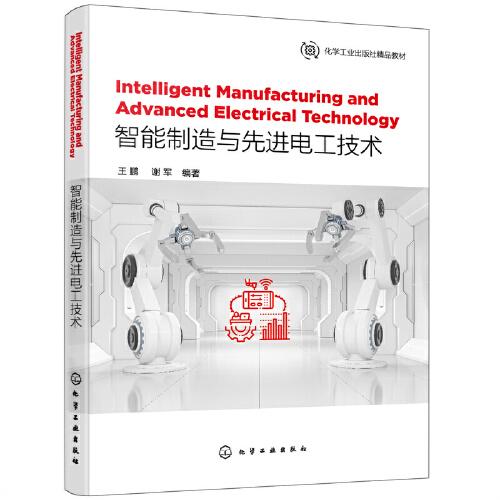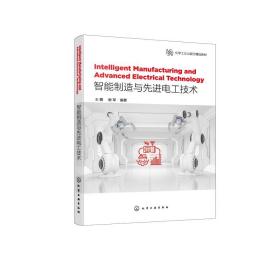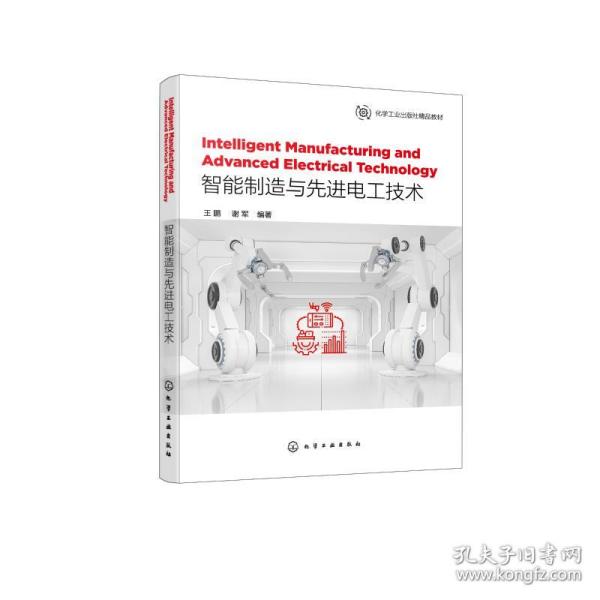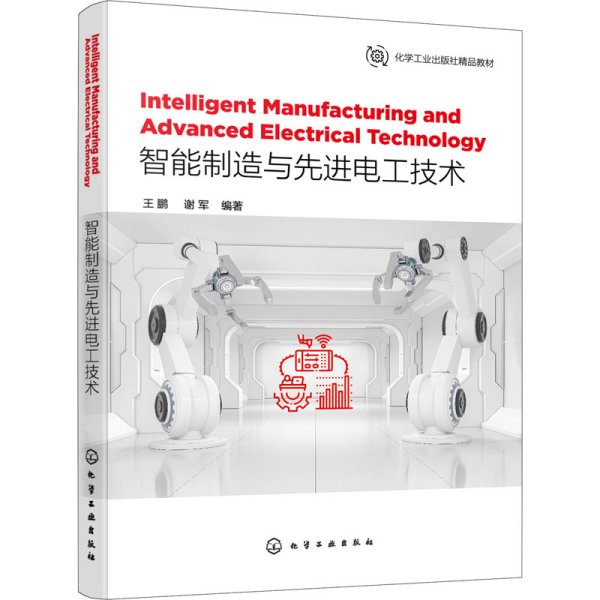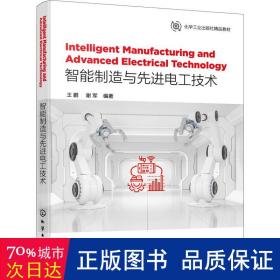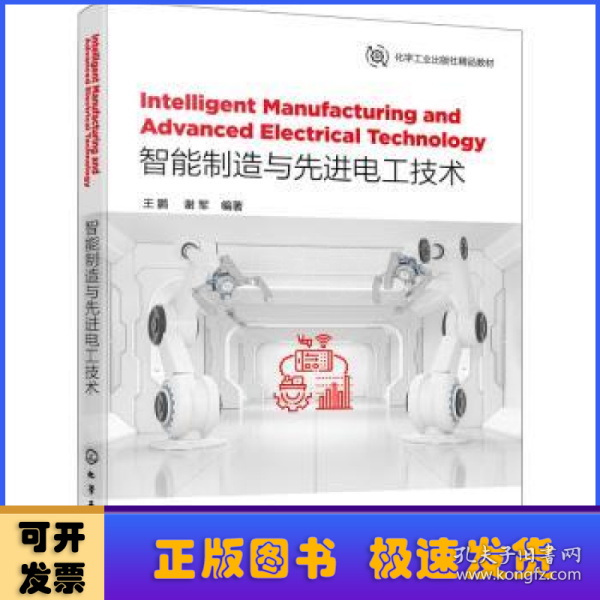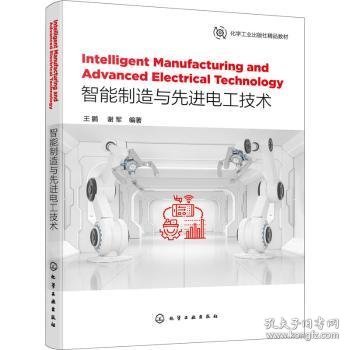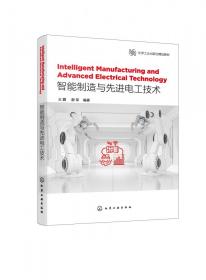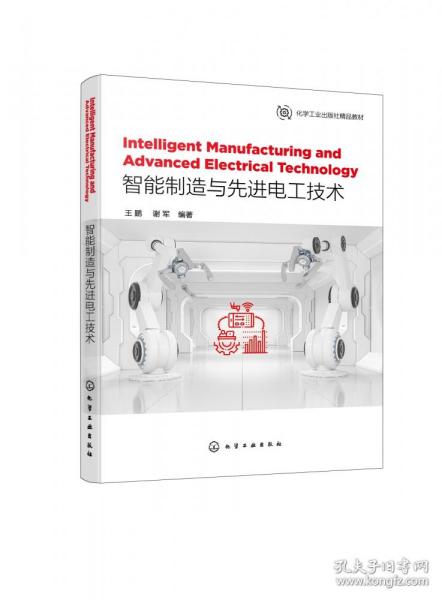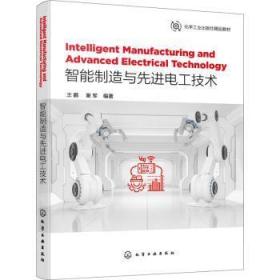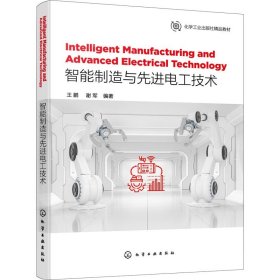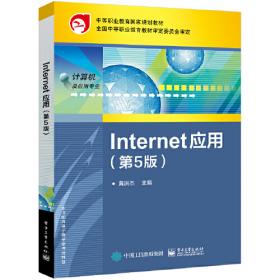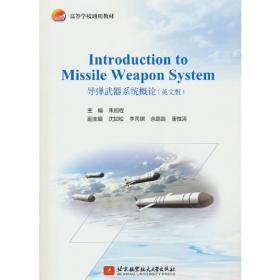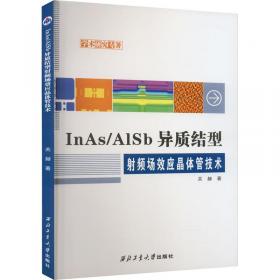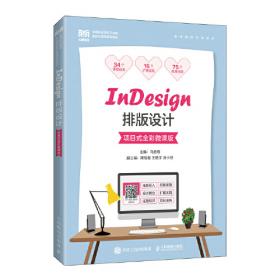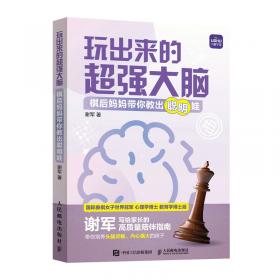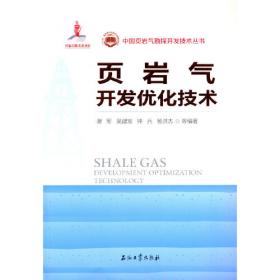Intelligent Manufacturing and Advanced Electrical Technology 智能制造与先进电工技术
出版时间:
2022-01
版次:
1
ISBN:
9787122399243
定价:
98.00
装帧:
平装
开本:
16开
纸张:
胶版纸
页数:
241页
字数:
405千字
-
本书针对智能制造与先进电工技术的前沿进行介绍,力图使机械类和电气类专业相关技术人员与学生了解和掌握我国电力与机械行业的攻关热点。全书共分为11 章,各部分各有侧重,读者可根据自己的专业领域选取不同部分进行阅读。第1 章介绍“中国制造2025”,有助于了解国家发展情况,提高民族自信心;第2 章介绍智能制造,摘录了周济院士、李培根院士等对国内外智能制造发展现状的评述;第3 章介绍纳米制造技术,列举了国内外主流的微加工技术;第4 章概述了国内外3D 打印的主流技术;第5 章是关于机器人的概述;第6 章侧重于电动汽车的介绍;第7 章系统地阐述了我国电力输送的发展现状和面临的问题;第8 章概述了我国电力系统的骄傲——特高压工程;第9~11 章属于扩展阅读,分别介绍了新型电力系统外绝缘防护、先进电工装备绝缘老化机理和智能诊断方法。
本书既可作为高校机械类和电气类学生专业英语教材,又可供相关领域工程技术人员学习、参考。 Chapter 1 Made in China 2025 001
1.1 Brief Overview 001
1.2 Background and Stated Goals 002
1.3 Key Industries 002
1.4 Key Industries MIC 2025 Changes the Terms of the Game 003
Notes and References 004
Chapter 2 Intelligent Manufacturing 006
2.1 Introduction of Intelligent Manufacturing 006
2.2 Three Basic Paradigms of Intelligent Manufacturing 006
2.2.1 Digital Manufacturing 007
2.2.2 Digital-Networked Manufacturing 008
2.2.3 New-Generation Intelligent Manufacturing 009
2.3 New-Generation Intelligent Manufacturing Leads and Promotes the New Industrial Revolution 010
2.3.1 Development Background 010
2.3.2 New-Generation Intelligent Manufacturing as a Core Technology of the New Industrial Revolution 010
2.3.3 Vision 011
2.4 The Technological Mechanism of New-Generation Intelligent Manufacturing: the Human-Cyber-Physical System 011
2.4.1 Traditional Manufacturing and the Human-Physical System 012
2.4.2 Digital Manufacturing, Digital-Networked Manufacturing and the Human-Cyber-Physical System (HCPS) 012
2.4.3 New-Generation Intelligent Manufacturing and the New-Generation HCPS 013
Notes and References 014
Chapter 3 Nanomanufacturing 016
3.1 Top-Down Versus Bottom-Up Processes 018
3.2 Top-Down Fabrication 019
3.3 Photolithography 019
3.4 Nanoimprint Lithography 020
3.5 Other Top-Down Techniques 022
3.6 Bottom-Up Fabrication 023
3.7 Colloidal Sel-f Assembly 024
3.8 DNA-Based Sel-f Assembly 024
3.9 Directed Self-Assembly: Top-Down Combined with Bottom Up 025
3.9.1 Directed Self-Assembly of Block Copolymers 025
3.9.2 Fluidic Assembly 026
3.9.3 Damped-Driven Systems 027
3.9.4 Design for Nanomanufacturing 027
Notes and References 028
Chapter 4 3D Printing 030
4.1 Overview 030
4.2 Terminology 030
4.3 History 031
4.3.1 1950 031
4.3.2 1970s 031
4.3.3 1980s 032
4.3.4 1990s 033
4.3.5 2000s 033
4.3.6 2010s 034
4.4 General Principles 034
4.4.1 Modeling 034
4.4.2 Printing 035
4.4.3 Finishing 036
4.4.4 Materials 036
4.4.5 Multi-Materials 3D Printing 036
4.5 Processes and Printers 037
4.6 Applications 039
Notes and References 043
Chapter 5 Robot Manufacturing 045
5.1 Etymology 046
5.2 Robotic Aspects 046
5.3 Applications 047
5.4 Components 048
5.4.1 Power Source 048
5.4.2 Actuation 048
5.4.3 Sensing 049
5.4.4 Manipulation 050
5.4.5 Locomotion 051
5.4.6 Environmental Interaction and Navigation 054
5.4.7 Human-Robot Interaction 055
5.5 Control 056
5.6 Research 057
5.7 Education and Training 059
5.7.1 Career Training 059
5.7.2 Certification 059
5.7.3 Summer Robotics Camp 059
5.7.4 Robotics Competitions 059
5.7.5 Robotics Afterschool Programs 060
5.7.6 Decolonial Educational Robotics 060
5.8 Employment 060
5.9 Occupational Safety and Health Implications 061
Notes and References 061
Chapter 6 Electric Car 063
6.1 Terminology 063
6.2 History 064
6.3 Economics 066
6.3.1 Total Cost of Ownership 066
6.3.2 Purchase Cost 066
6.3.3 Operating Cost 067
6.3.4 Manufacturing Cost 067
6.4 Environmental Aspects 067
6.5 Performance 067
6.6 Energy Efficiency 068
6.7 Safety 069
6.7.1 Risk of Fire 069
6.7.2 Vehicle Safety 069
6.8 Controls 070
6.9 Batteries 070
6.9.1 Range 070
6.9.2 Charging 071
6.9.3 Lifespan 071
6.9.4 Future 071
6.10 Electric Vehicle Charging Patents 072
6.11 Infrastructure 072
6.11.1 Charging Station 072
6.11.2 Vehicle-to-Grid: Uploading and Grid Buffering 073
6.12 Currently Available Electric Cars 073
6.12.1 Highway Capable 073
6.12.2 Retrofitted Electric Vehicles 074
6.12.3 Electric Cars by Country 074
6.13 Government Policies and Incentives 074
6.14 EV Plans From Major Manufacturers 075
6.15 Psychological Barriers to Adoption 075
6.15.1 Range Anxiety 075
6.15.2 Identity Concerns 075
Notes and References 076
Chapter 7 Electric Power Transmission 078
7.1 System 079
7.2 Overhead Transmission 079
7.3 Underground Transmission 080
7.4 History 080
7.5 Bulk Power Transmission 082
7.5.1 Grid Input 084
7.5.2 Losses 084
7.5.3 Transposition 085
7.5.4 Subtransmission 086
7.5.5 Transmission Grid Exit 086
7.6 Advantage of High-Voltage Power Transmission 086
7.7 High-Voltage Direct Current 086
7.8 Capacity 087
7.9 Control 088
7.9.1 Load Balancing 088
7.9.2 Failure Protection 089
7.10 Communications 089
7.11 Electricity Market Reform 090
7.12 Cost of Electric Power Transmission 090
7.13 Merchant Transmission 090
7.14 Health Concerns 091
7.15 Policy by Country 092
7.16 Special Transmission 093
7.16.1 Grids for Railways 093
7.16.2 Superconducting Cables 093
Notes and References 093
Chapter 8 China Ultrahigh Voltage Project 095
8.1 Research History and Background of UHV Transmission 096
8.1.1 Russia (The Former USSR) 096
8.1.2 Japan 097
8.1.3 The USA 097
8.1.4 Italy 099
8.1.5 Canada 099
8.1.6 Brazil 100
8.1.7 China 100
8.2 Target Design and Research Background of China’s UHV System 101
8.2.1 The Demand and Goals Analysis of UHV Transmission in China 101
8.2.2 Important Innovations and Progress 104
8.2.3 UHV AC and DC Key Technologies Researches and Achievements 105
8.3 Equipment Manufacturing 111
8.3.1 UHV AC Equipment Manufacture 111
8.3.2 UHV DC Equipment Manufacture 113
Notes and References 114
Chapter 9 Advanced External Insulation Protection System 116
9.1 Transparent and Superhydrophobic Coating for the Solar Panels 116
9.1.1 Materials 117
9.1.2 Preparation of Silica Nanoparticle Suspension 117
9.1.3 Preparation of Superhydrophobic Coating 117
9.1.4 Characterization 118
9.1.5 Results and Discussion 118
9.2 The Superhydrophobic Graphene Coating for Anti-Corrosion Application 123
9.2.1 Materials 124
9.2.2 Preparation of EEG 124
9.2.3 Preparation of Superhydrophobic Composite Coating 124
9.2.4 Characterization 125
9.2.5 Results and Discussion 125
9.3 The Superhydrophobic Steel for Anti-Corrosion Application 129
9.3.1 Materials 130
9.3.2 The Preparation of Micro Nano Roughness 130
9.3.3 Ultrasonic Treatment 130
9.3.4 Surface Modification 130
9.3.5 Characterization 130
9.3.6 Results and Discussion 131
9.4 The Graphene Semiconductor Superhydrophobic Coating for Anti-Icing Application 135
9.4.1 Materials 136
9.4.2 Preparation of Hydrophobic Powders 137
9.4.3 Dissolution and Resolidifcation Process to Construct Superhydrophobic Sample 137
9.4.4 Characterization 137
9.4.5 Icing/Deicing Test 137
9.4.6 Results and Discussion 138
9.5 The Self-Healable Graphene Coating for Anti-Icing Application 143
9.5.1 Materials 145
9.5.2 The Synthesis of Prepolymer A 145
9.5.3 The Synthesis of Prepolymer B 145
9.5.4 Preparation of Hydrophobic CNT Powders 145
9.5.5 Preparation of Hydrophobic CNT Solution 145
9.5.6 Preparation of Self-Healing Superhydrophobic Coating 146
9.5.7 Characterization 146
9.5.8 Icing/Deicing Test 146
9.5.9 Results and Disscussion 146
Notes and References 152
Chapter 10 Thermal Ageing Mechanism of Advanced Electrical Insulation Materials—Taking Oiled Paper Insulation as an Example 154
10.1 Introduction of Oiled Paper Insulation 154
10.2 Experimental Plan Design 155
10.2.1 Typical Defect Model and Experimental Wiring of Oil-Paper Insulation 155
10.2.2 Selection and Treatment of Oil-Paper Insulation Samples 157
10.2.3 Accelerated Ageing of Insulating Paperboard 158
10.3 Surface Discharge Deterioration Law of Transformer Oil-Paper Insulation 160
10.3.1 Initial Discharge Voltage and Discharge Endurance Time of Transformer Oil-Paper Insulation 160
10.3.2 Description of Surface Discharge Deterioration Phenomenon of Oil-Paper Insulation of Transformer and Division of Discharge Development Degree 161
10.3.3 Variation Law of Characteristic Quantity of Surface Discharge of Transformer Oil-Paper Insulation 164
10.4 Development Law of Tip Discharge Deterioration of Transformer Oil-Paper Insulation 174
10.4.1 Initial Discharge Voltage and Discharge Endurance Time of the Transformer Oil-Paper Insulation Tip Discharge 174
10.4.2 Phenomenon Description of Discharge Development of Transformer Oil-Paper Insulation Tip and Division of Discharge Development Process 174
10.4.3 Variation Law of Characteristic Quantities of Discharge at the Tip of Transformer Oil-Paper Insulation 177
10.5 Reasons for the Influence of Ageing of Insulating Paperboard on the Development of Partial Discharge of Oil-Paper Insulation 184
10.5.1 Basic Structure of Insulation Paperboard 184
10.5.2 Analysis of the Microscopic Properties of Insulating Paperboard with Different Ageing Degrees 186
10.5.3 Explanation of the Influence of Ageing of Insulating Paperboard on the Development of Discharge 189
10.6 Summary of This Chapter 191
Notes and References 191
Chapter 11 Intelligent Diagnosis Method of Advanced Electrical Equipment 193
11.1 Technology and Application of Intelligent Sensing and State Sensing for Transformation Equipment 193
11.1.1 Introduction 193
11.1.2 Data Situation 195
11.1.3 Key Technology 197
11.1.4 Application Scenarios 202
11.1.5 Facing Challenges and Future Trends 208
11.2 Typical Application and Prospect of Digital Twin Technology in Power Grid Operation 209
11.2.1 Introduction of Digital Twin Technology 209
11.2.2 Digital Twin 211
11.2.3 Digital Twin Power Grid System 213
11.2.4 Typical Applications and Prospects of Digital Twin Power Grids 218
11.2.5 Conclusion 227
11.3 Technologies and Solutions of Blockchain Application in Power Equipment Ubiquitous Internet of Things 228
11.3.1 Introduction 228
11.3.2 Ubiquitous IoT Architecture Design for Power Equipment based on Blockchain 230
11.3.3 Key Technology 235
11.3.4 Technology Outlook 238
11.3.5 Conclusion 239
Notes and References 240
-
内容简介:
本书针对智能制造与先进电工技术的前沿进行介绍,力图使机械类和电气类专业相关技术人员与学生了解和掌握我国电力与机械行业的攻关热点。全书共分为11 章,各部分各有侧重,读者可根据自己的专业领域选取不同部分进行阅读。第1 章介绍“中国制造2025”,有助于了解国家发展情况,提高民族自信心;第2 章介绍智能制造,摘录了周济院士、李培根院士等对国内外智能制造发展现状的评述;第3 章介绍纳米制造技术,列举了国内外主流的微加工技术;第4 章概述了国内外3D 打印的主流技术;第5 章是关于机器人的概述;第6 章侧重于电动汽车的介绍;第7 章系统地阐述了我国电力输送的发展现状和面临的问题;第8 章概述了我国电力系统的骄傲——特高压工程;第9~11 章属于扩展阅读,分别介绍了新型电力系统外绝缘防护、先进电工装备绝缘老化机理和智能诊断方法。
本书既可作为高校机械类和电气类学生专业英语教材,又可供相关领域工程技术人员学习、参考。
-
目录:
Chapter 1 Made in China 2025 001
1.1 Brief Overview 001
1.2 Background and Stated Goals 002
1.3 Key Industries 002
1.4 Key Industries MIC 2025 Changes the Terms of the Game 003
Notes and References 004
Chapter 2 Intelligent Manufacturing 006
2.1 Introduction of Intelligent Manufacturing 006
2.2 Three Basic Paradigms of Intelligent Manufacturing 006
2.2.1 Digital Manufacturing 007
2.2.2 Digital-Networked Manufacturing 008
2.2.3 New-Generation Intelligent Manufacturing 009
2.3 New-Generation Intelligent Manufacturing Leads and Promotes the New Industrial Revolution 010
2.3.1 Development Background 010
2.3.2 New-Generation Intelligent Manufacturing as a Core Technology of the New Industrial Revolution 010
2.3.3 Vision 011
2.4 The Technological Mechanism of New-Generation Intelligent Manufacturing: the Human-Cyber-Physical System 011
2.4.1 Traditional Manufacturing and the Human-Physical System 012
2.4.2 Digital Manufacturing, Digital-Networked Manufacturing and the Human-Cyber-Physical System (HCPS) 012
2.4.3 New-Generation Intelligent Manufacturing and the New-Generation HCPS 013
Notes and References 014
Chapter 3 Nanomanufacturing 016
3.1 Top-Down Versus Bottom-Up Processes 018
3.2 Top-Down Fabrication 019
3.3 Photolithography 019
3.4 Nanoimprint Lithography 020
3.5 Other Top-Down Techniques 022
3.6 Bottom-Up Fabrication 023
3.7 Colloidal Sel-f Assembly 024
3.8 DNA-Based Sel-f Assembly 024
3.9 Directed Self-Assembly: Top-Down Combined with Bottom Up 025
3.9.1 Directed Self-Assembly of Block Copolymers 025
3.9.2 Fluidic Assembly 026
3.9.3 Damped-Driven Systems 027
3.9.4 Design for Nanomanufacturing 027
Notes and References 028
Chapter 4 3D Printing 030
4.1 Overview 030
4.2 Terminology 030
4.3 History 031
4.3.1 1950 031
4.3.2 1970s 031
4.3.3 1980s 032
4.3.4 1990s 033
4.3.5 2000s 033
4.3.6 2010s 034
4.4 General Principles 034
4.4.1 Modeling 034
4.4.2 Printing 035
4.4.3 Finishing 036
4.4.4 Materials 036
4.4.5 Multi-Materials 3D Printing 036
4.5 Processes and Printers 037
4.6 Applications 039
Notes and References 043
Chapter 5 Robot Manufacturing 045
5.1 Etymology 046
5.2 Robotic Aspects 046
5.3 Applications 047
5.4 Components 048
5.4.1 Power Source 048
5.4.2 Actuation 048
5.4.3 Sensing 049
5.4.4 Manipulation 050
5.4.5 Locomotion 051
5.4.6 Environmental Interaction and Navigation 054
5.4.7 Human-Robot Interaction 055
5.5 Control 056
5.6 Research 057
5.7 Education and Training 059
5.7.1 Career Training 059
5.7.2 Certification 059
5.7.3 Summer Robotics Camp 059
5.7.4 Robotics Competitions 059
5.7.5 Robotics Afterschool Programs 060
5.7.6 Decolonial Educational Robotics 060
5.8 Employment 060
5.9 Occupational Safety and Health Implications 061
Notes and References 061
Chapter 6 Electric Car 063
6.1 Terminology 063
6.2 History 064
6.3 Economics 066
6.3.1 Total Cost of Ownership 066
6.3.2 Purchase Cost 066
6.3.3 Operating Cost 067
6.3.4 Manufacturing Cost 067
6.4 Environmental Aspects 067
6.5 Performance 067
6.6 Energy Efficiency 068
6.7 Safety 069
6.7.1 Risk of Fire 069
6.7.2 Vehicle Safety 069
6.8 Controls 070
6.9 Batteries 070
6.9.1 Range 070
6.9.2 Charging 071
6.9.3 Lifespan 071
6.9.4 Future 071
6.10 Electric Vehicle Charging Patents 072
6.11 Infrastructure 072
6.11.1 Charging Station 072
6.11.2 Vehicle-to-Grid: Uploading and Grid Buffering 073
6.12 Currently Available Electric Cars 073
6.12.1 Highway Capable 073
6.12.2 Retrofitted Electric Vehicles 074
6.12.3 Electric Cars by Country 074
6.13 Government Policies and Incentives 074
6.14 EV Plans From Major Manufacturers 075
6.15 Psychological Barriers to Adoption 075
6.15.1 Range Anxiety 075
6.15.2 Identity Concerns 075
Notes and References 076
Chapter 7 Electric Power Transmission 078
7.1 System 079
7.2 Overhead Transmission 079
7.3 Underground Transmission 080
7.4 History 080
7.5 Bulk Power Transmission 082
7.5.1 Grid Input 084
7.5.2 Losses 084
7.5.3 Transposition 085
7.5.4 Subtransmission 086
7.5.5 Transmission Grid Exit 086
7.6 Advantage of High-Voltage Power Transmission 086
7.7 High-Voltage Direct Current 086
7.8 Capacity 087
7.9 Control 088
7.9.1 Load Balancing 088
7.9.2 Failure Protection 089
7.10 Communications 089
7.11 Electricity Market Reform 090
7.12 Cost of Electric Power Transmission 090
7.13 Merchant Transmission 090
7.14 Health Concerns 091
7.15 Policy by Country 092
7.16 Special Transmission 093
7.16.1 Grids for Railways 093
7.16.2 Superconducting Cables 093
Notes and References 093
Chapter 8 China Ultrahigh Voltage Project 095
8.1 Research History and Background of UHV Transmission 096
8.1.1 Russia (The Former USSR) 096
8.1.2 Japan 097
8.1.3 The USA 097
8.1.4 Italy 099
8.1.5 Canada 099
8.1.6 Brazil 100
8.1.7 China 100
8.2 Target Design and Research Background of China’s UHV System 101
8.2.1 The Demand and Goals Analysis of UHV Transmission in China 101
8.2.2 Important Innovations and Progress 104
8.2.3 UHV AC and DC Key Technologies Researches and Achievements 105
8.3 Equipment Manufacturing 111
8.3.1 UHV AC Equipment Manufacture 111
8.3.2 UHV DC Equipment Manufacture 113
Notes and References 114
Chapter 9 Advanced External Insulation Protection System 116
9.1 Transparent and Superhydrophobic Coating for the Solar Panels 116
9.1.1 Materials 117
9.1.2 Preparation of Silica Nanoparticle Suspension 117
9.1.3 Preparation of Superhydrophobic Coating 117
9.1.4 Characterization 118
9.1.5 Results and Discussion 118
9.2 The Superhydrophobic Graphene Coating for Anti-Corrosion Application 123
9.2.1 Materials 124
9.2.2 Preparation of EEG 124
9.2.3 Preparation of Superhydrophobic Composite Coating 124
9.2.4 Characterization 125
9.2.5 Results and Discussion 125
9.3 The Superhydrophobic Steel for Anti-Corrosion Application 129
9.3.1 Materials 130
9.3.2 The Preparation of Micro Nano Roughness 130
9.3.3 Ultrasonic Treatment 130
9.3.4 Surface Modification 130
9.3.5 Characterization 130
9.3.6 Results and Discussion 131
9.4 The Graphene Semiconductor Superhydrophobic Coating for Anti-Icing Application 135
9.4.1 Materials 136
9.4.2 Preparation of Hydrophobic Powders 137
9.4.3 Dissolution and Resolidifcation Process to Construct Superhydrophobic Sample 137
9.4.4 Characterization 137
9.4.5 Icing/Deicing Test 137
9.4.6 Results and Discussion 138
9.5 The Self-Healable Graphene Coating for Anti-Icing Application 143
9.5.1 Materials 145
9.5.2 The Synthesis of Prepolymer A 145
9.5.3 The Synthesis of Prepolymer B 145
9.5.4 Preparation of Hydrophobic CNT Powders 145
9.5.5 Preparation of Hydrophobic CNT Solution 145
9.5.6 Preparation of Self-Healing Superhydrophobic Coating 146
9.5.7 Characterization 146
9.5.8 Icing/Deicing Test 146
9.5.9 Results and Disscussion 146
Notes and References 152
Chapter 10 Thermal Ageing Mechanism of Advanced Electrical Insulation Materials—Taking Oiled Paper Insulation as an Example 154
10.1 Introduction of Oiled Paper Insulation 154
10.2 Experimental Plan Design 155
10.2.1 Typical Defect Model and Experimental Wiring of Oil-Paper Insulation 155
10.2.2 Selection and Treatment of Oil-Paper Insulation Samples 157
10.2.3 Accelerated Ageing of Insulating Paperboard 158
10.3 Surface Discharge Deterioration Law of Transformer Oil-Paper Insulation 160
10.3.1 Initial Discharge Voltage and Discharge Endurance Time of Transformer Oil-Paper Insulation 160
10.3.2 Description of Surface Discharge Deterioration Phenomenon of Oil-Paper Insulation of Transformer and Division of Discharge Development Degree 161
10.3.3 Variation Law of Characteristic Quantity of Surface Discharge of Transformer Oil-Paper Insulation 164
10.4 Development Law of Tip Discharge Deterioration of Transformer Oil-Paper Insulation 174
10.4.1 Initial Discharge Voltage and Discharge Endurance Time of the Transformer Oil-Paper Insulation Tip Discharge 174
10.4.2 Phenomenon Description of Discharge Development of Transformer Oil-Paper Insulation Tip and Division of Discharge Development Process 174
10.4.3 Variation Law of Characteristic Quantities of Discharge at the Tip of Transformer Oil-Paper Insulation 177
10.5 Reasons for the Influence of Ageing of Insulating Paperboard on the Development of Partial Discharge of Oil-Paper Insulation 184
10.5.1 Basic Structure of Insulation Paperboard 184
10.5.2 Analysis of the Microscopic Properties of Insulating Paperboard with Different Ageing Degrees 186
10.5.3 Explanation of the Influence of Ageing of Insulating Paperboard on the Development of Discharge 189
10.6 Summary of This Chapter 191
Notes and References 191
Chapter 11 Intelligent Diagnosis Method of Advanced Electrical Equipment 193
11.1 Technology and Application of Intelligent Sensing and State Sensing for Transformation Equipment 193
11.1.1 Introduction 193
11.1.2 Data Situation 195
11.1.3 Key Technology 197
11.1.4 Application Scenarios 202
11.1.5 Facing Challenges and Future Trends 208
11.2 Typical Application and Prospect of Digital Twin Technology in Power Grid Operation 209
11.2.1 Introduction of Digital Twin Technology 209
11.2.2 Digital Twin 211
11.2.3 Digital Twin Power Grid System 213
11.2.4 Typical Applications and Prospects of Digital Twin Power Grids 218
11.2.5 Conclusion 227
11.3 Technologies and Solutions of Blockchain Application in Power Equipment Ubiquitous Internet of Things 228
11.3.1 Introduction 228
11.3.2 Ubiquitous IoT Architecture Design for Power Equipment based on Blockchain 230
11.3.3 Key Technology 235
11.3.4 Technology Outlook 238
11.3.5 Conclusion 239
Notes and References 240
查看详情
-
全新
湖南省长沙市
平均发货42小时
成功完成率83.91%
-
全新
山东省济宁市
平均发货68小时
成功完成率80.88%
-
全新
河北省保定市
平均发货29小时
成功完成率86.37%
-
全新
山东省泰安市
平均发货24小时
成功完成率92.66%
-
全新
江苏省苏州市
平均发货9小时
成功完成率95.49%
-
全新
江苏省无锡市
平均发货10小时
成功完成率93.19%
-
全新
河北省保定市
平均发货15小时
成功完成率91.26%
-
全新
湖南省长沙市
平均发货28小时
成功完成率88.59%
-
全新
江苏省南京市
平均发货7小时
成功完成率98.04%
-
全新
江苏省南京市
平均发货16小时
成功完成率82.86%
-
全新
江苏省南京市
平均发货8小时
成功完成率96.7%
-
全新
江苏省南京市
平均发货16小时
成功完成率82.86%
-
全新
北京市丰台区
平均发货23小时
成功完成率88.6%
-
全新
河北省保定市
平均发货27小时
成功完成率84.02%
-
全新
北京市朝阳区
平均发货18小时
成功完成率94.95%
-
全新
广东省广州市
平均发货20小时
成功完成率86.41%
-
全新
北京市丰台区
平均发货8小时
成功完成率90.54%
-
全新
湖北省武汉市
平均发货19小时
成功完成率86.23%
-
全新
上海市黄浦区
平均发货11小时
成功完成率94.52%
-
全新
山东省泰安市
平均发货18小时
成功完成率92.56%
-
全新
北京市通州区
平均发货10小时
成功完成率88.19%
-
全新
北京市通州区
平均发货11小时
成功完成率94.35%
-
全新
江苏省宿迁市
平均发货25小时
成功完成率87.82%
-
全新
山东省泰安市
平均发货24小时
成功完成率92.66%
-
全新
广东省广州市
平均发货19小时
成功完成率88.41%
-
全新
广东省广州市
平均发货8小时
成功完成率94.65%
-
全新
江苏省无锡市
平均发货8小时
成功完成率95.8%
-
全新
北京市朝阳区
平均发货14小时
成功完成率84.91%
-
全新
山东省泰安市
平均发货8小时
成功完成率87.36%
-
全新
北京市通州区
平均发货16小时
成功完成率96.12%
-
全新
北京市通州区
平均发货9小时
成功完成率88.93%
-
全新
山东省泰安市
平均发货8小时
成功完成率93.13%
-
全新
广东省广州市
平均发货26小时
成功完成率79.62%
-
全新
广东省广州市
平均发货18小时
成功完成率87.23%
-
全新
广东省广州市
平均发货16小时
成功完成率89.38%
-
全新
北京市朝阳区
平均发货13小时
成功完成率93.85%
-
全新
广东省广州市
平均发货16小时
成功完成率88.01%
-
九五品
湖北省武汉市
平均发货29小时
成功完成率79.7%
-
全新
河北省保定市
平均发货12小时
成功完成率81.31%
-
全新
河北省保定市
平均发货26小时
成功完成率85.25%
-
全新
湖北省武汉市
平均发货19小时
成功完成率73.39%
-
全新
湖北省武汉市
平均发货27小时
成功完成率71.43%
-
全新
北京市丰台区
平均发货21小时
成功完成率77.19%
-
全新
湖北省武汉市
平均发货20小时
成功完成率86.75%
-
全新
广东省广州市
平均发货9小时
成功完成率87.37%
-
全新
河北省保定市
平均发货24小时
成功完成率86.59%
-
全新
山东省泰安市
平均发货13小时
成功完成率92.29%
-
全新
山东省烟台市
平均发货12小时
成功完成率84.71%
-
全新
河北省沧州市
平均发货14小时
成功完成率76.09%
-
全新
安徽省合肥市
平均发货12小时
成功完成率95.24%

 占位居中
占位居中

